Process
Agave
Hiatus Tequila is made from 100% blue Weber agave. While some cut corners by harvesting their agave before it’s ripe, we prefer to take our time. Our plants take up to 8 years to fully ripen.
Often mistaken for a cactus, agave is a perennial succulent in the same family as the yucca and Joshua tree. Although more than 200 identified species of agave exist, tequila can be made by just one, the blue agave. By regulation, the agave cultivated for tequila production must be grown in a specific region. Ours is estate-grown in the fertile volcanic soil of the rolling hills outside Tequila. This area is known as Tequila Valley.
Mature agave can grow 10 feet tall and just as wide. Its thick, spiny leaves must be removed to expose the heart of the plant, known as the piña because it resembles a pineapple. This is the part of the plant used to make tequila. We harvest our agave only once it has achieved optimum ripening, at roughly 7 -8 years of age. Harvesting prematurely could lead to bitter or other unwanted flavors in the tequila. We start with quality ingredients so we don’t have to tamper with the final product.
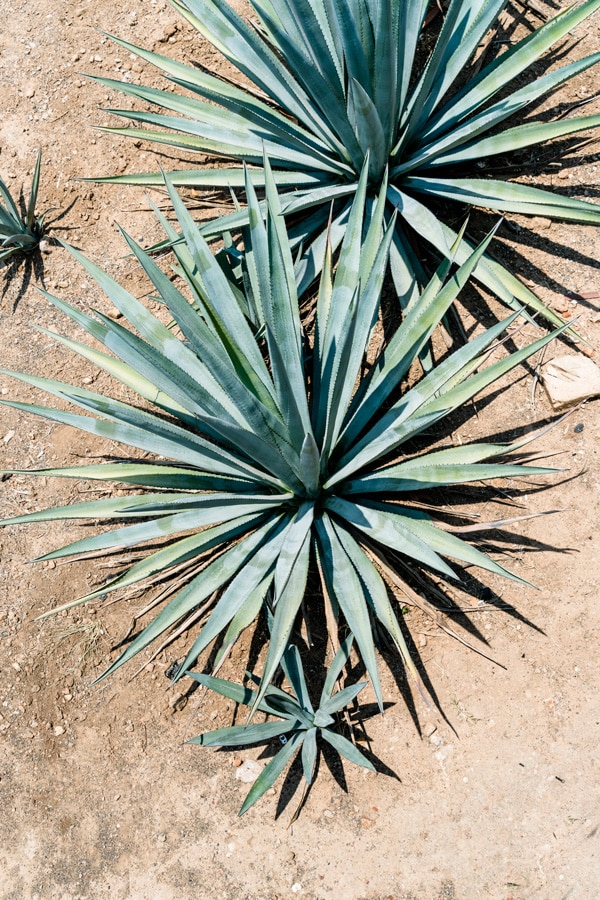

Harvesting
Those who harvest agave for tequila production are known as jimadores. They use virtually the same tools and methods their ancestors relied on for centuries. The work is still done entirely by hand.
Jimadores work long days under the intense Mexican sun. Harvesting agave requires incredible physical endurance and an eye for the signs of ripeness. It’s a craft that also requires delicate precision, from slicing off the fleshy leaves in just the right way to extract the desired flavors from the piña to removing and replanting the baby agaves for propagation without causing stress to the mother plant. Using a primitive tool called a coa, the jimadores harvest only mature plants, those that have achieved peak sugar levels. These skills, passed down from generation to generation, are part of the culture of tequila, which is rooted in the people’s connection to their land.

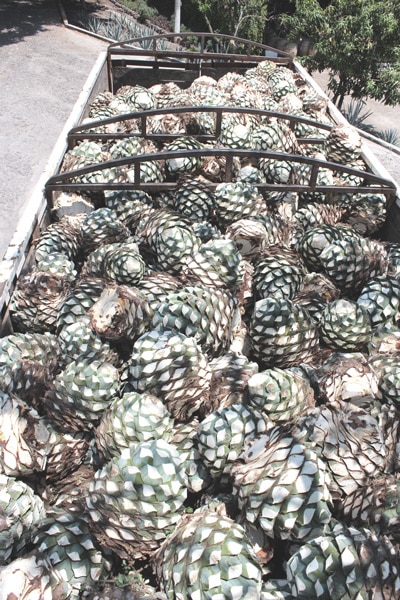
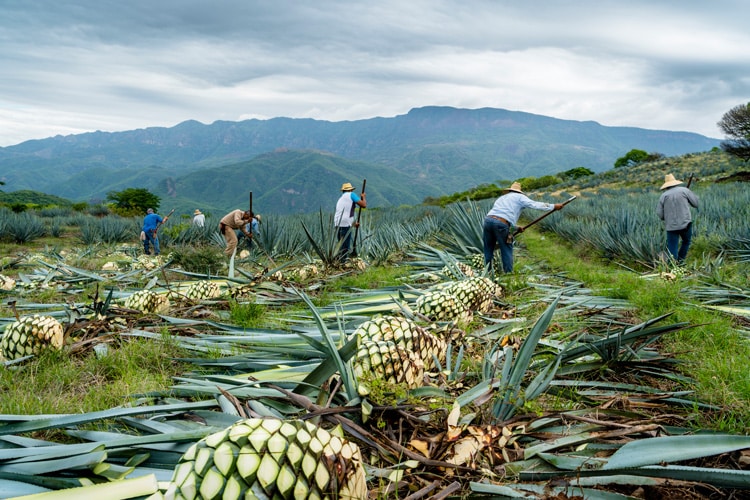
Transportation
After harvesting the agave they are hand loaded on to trucks for their final journey to the distillery.

Weighing and Sampling
Upon arrival to the distillery the agave laden truck is weighed and random samples are collected from various agave for inspection. The samples are taken to the lab to test for any possible disease, sugar content, and ripeness.

Unloading
Once the agave have been given the final approval the truck proceeds to the receiving area where the agave are removed and stacked in front of the ovens.
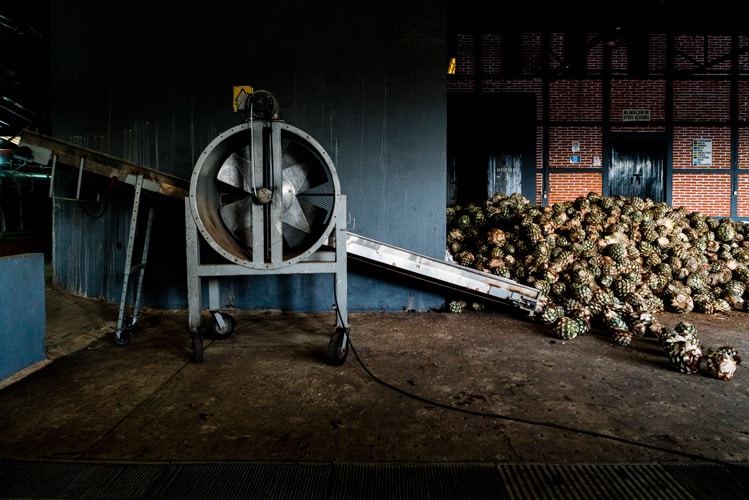
Cooking
Automated cooking methods have become commonplace in tequila. We prefer to use traditional stone ovens to gently steam-roast our piñas.
The agave is stacked by hand in the ovens, which are the size of small rooms, then baked for 36-40 hours under constant steam pressure. It stays there for an another 6-8 hours, without steam, before the oven doors are opened and the browned, caramelized piñas are cooled. The cooking process converts the plant’s complex sugars into simpler, fermentable sugars. Overcooking to compensate for underripe agave can lead to unwanted charred flavors, requiring additional distillations to rectify the problem. We start with fully ripened agave and bake it slowly and evenly to give us rich, robust flavors.

Milling
After baking, the agave must be crushed to extract its juice and sugars for fermentation. Nowadays, one of the most commonly used machines for this process is a mechanized mill that shreds the agave’s fibers, which can impart bitter flavors to tequila. We prefer a gentler crush.
At La Cofradia, the roasted agave is crushed with our custom-made screw press extractor, which acts like a giant corkscrew, squeezing the meat and fibers of the agave and releasing its sweet nectar. Pressing rather than pulverizing the agave allows sweeter, rounder flavors to come through in the tequila.
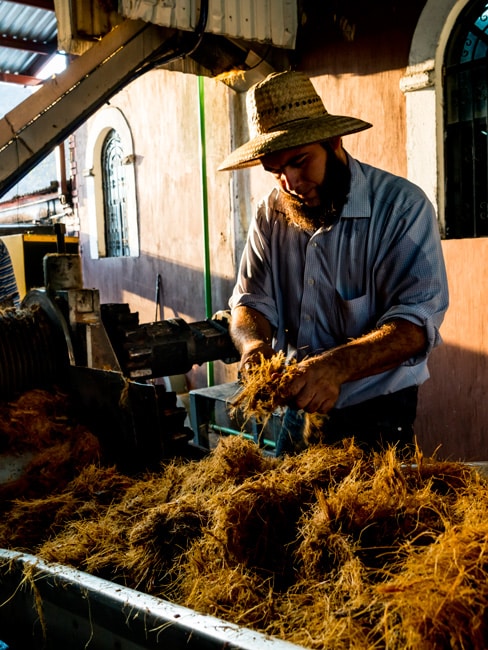
Fermentation
At this stage, the sweet agave nectar is transformed. Fermentation occurs when yeasts feed on sugars, converting them to alcohol. Yeasts are found both on the plants and living ambient in the environment. It’s common for brands to use synthetic yeasts, but we rely only on the ambient yeasts native to the distillery.
The fermentation process takes 4-6 days, depending on the season. Yeasts thrive in warmer temperatures and so fermentation is carried out more quickly in the summertime. In cooler months, the process takes a little longer. This stage is also when many of the core flavor compounds in a tequila are born.
Distillation
Tequila regulations call for it to be distilled at least twice. We use stainless steel pot stills equipped with copper coils.
Because each additional distillation strips complexity from the tequila, we take great care to harvest and cook our agave just right so we don’t have to distill more than twice.
Distillation is the process of concentrating alcohol through evaporation. In the first distillation, we remove the heads (the initial part of the distillate) and tails (the final part), both of which contain toxic compounds. The heart, the most desirable part of the distillate, is kept for a second distillation. This second run results in a blanco (white) tequila that is 55-60% alcohol by volume. We bring it down to 40% with distilled water and rest it for 24 hours before bottling.

Filtration
After distillation, the tequila blanco is filtered through micro-cellulose fibers and carbon filters and oxygenated for 24 hours. We believe that by filtering longer than most, we are able to produce a smoother, more balanced flavor, combined with the oxygenation which naturally creates a soft, velvety texture.
Bottling & Aging
We love our blanco just the way it is. But it’s always fun to see how a spirit ages in oak. We make a reposado (rested) tequila and an añejo (aged) expression.
Officially, a reposado must be rested a minimum of two months, while an añejo must be aged at least 12 months. American whiskey and bourbon barrels are most commonly used for aging tequila. We age ours in recycled American whiskey barrels. Our reposado is rested for 6 months, while our añejo is aged a full year.

